
A jet engine is a type of reaction engine, discharging a fast-moving jet of heated gas that generates thrust by jet propulsion. While this broad definition may include rocket, water jet, and hybrid propulsion, the term jet engine typically refers to an internal combustion air-breathing jet engine such as a turbojet, turbofan, ramjet, pulse jet, or scramjet. In general, jet engines are internal combustion engines.

A ramjet is a form of airbreathing jet engine that requires forward motion of the engine to provide air for combustion. Ramjets work most efficiently at supersonic speeds around Mach 3 and can operate up to Mach 6.
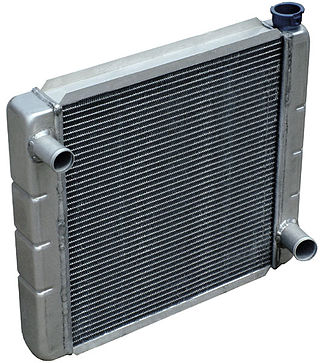
A radiator is a heat exchanger used to transfer thermal energy from one medium to another for the purpose of cooling and heating. The majority of radiators are constructed to function in cars, buildings, and electronics.

A scramjet is a variant of a ramjet airbreathing jet engine in which combustion takes place in supersonic airflow. As in ramjets, a scramjet relies on high vehicle speed to compress the incoming air forcefully before combustion, but wheres a ramjet decelerates the air to subsonic velocities before combustion using shock cones, a scramjet has no shock cone and slows the airflow using shockwaves produced by its ignition source in place of a shock cone. This allows the scramjet to operate efficiently at extremely high speeds.
An antifreeze is an additive which lowers the freezing point of a water-based liquid. An antifreeze mixture is used to achieve freezing-point depression for cold environments. Common antifreezes also increase the boiling point of the liquid, allowing higher coolant temperature. However, all common antifreeze additives also have lower heat capacities than water, and do reduce water's ability to act as a coolant when added to it.
Internal combustion engine cooling uses either air or liquid to remove the waste heat from an internal combustion engine. For small or special purpose engines, cooling using air from the atmosphere makes for a lightweight and relatively simple system. Watercraft can use water directly from the surrounding environment to cool their engines. For water-cooled engines on aircraft and surface vehicles, waste heat is transferred from a closed loop of water pumped through the engine to the surrounding atmosphere by a radiator.

The Packard V-1650 Merlin is a version of the Rolls-Royce Merlin aircraft engine, produced under license in the United States by the Packard Motor Car Company. The engine was licensed to expand production of the Rolls-Royce Merlin for British use. The engine also filled a gap in the U.S. at a time when similarly powered American-made engines were not available.
A coolant is a substance, typically liquid, that is used to reduce or regulate the temperature of a system. An ideal coolant has high thermal capacity, low viscosity, is low-cost, non-toxic, chemically inert and neither causes nor promotes corrosion of the cooling system. Some applications also require the coolant to be an electrical insulator.
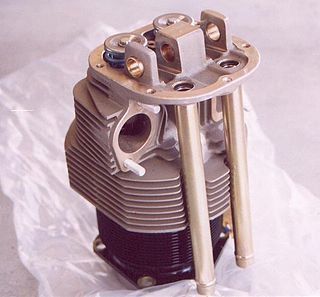
Air-cooled engines rely on the circulation of air directly over heat dissipation fins or hot areas of the engine to cool them in order to keep the engine within operating temperatures. Air-cooled designs are far simpler than their liquid-cooled counterparts, which require a separate radiator, coolant reservoir, piping and pumps.
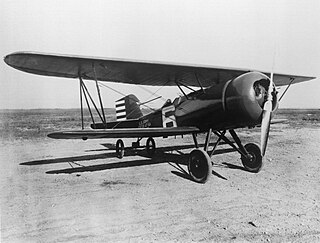
The NACA cowling is a type of aerodynamic fairing used to streamline radial engines installed on airplanes. It was developed by Fred Weick of the National Advisory Committee for Aeronautics (NACA) in 1927. It was a major advance in aerodynamic drag reduction, and paid for its development and installation costs many times over due to the gains in fuel efficiency that it enabled.
A precooled jet engine is a concept that enables jet engines with turbomachinery, as opposed to ramjets, to be used at high speeds. Precooling restores some or all of the performance degradation of the engine compressor, as well as that of the complete gas generator, which would otherwise prevent flight with high ram temperatures.
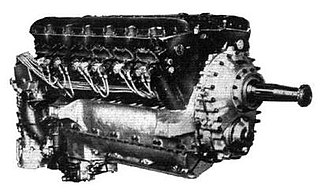
The Rolls-Royce Goshawk was a development of the Rolls-Royce Kestrel that used evaporative or steam cooling. In line with Rolls-Royce convention of naming piston engines after birds of prey, it was named after the goshawk.
A jet engine performs by converting fuel into thrust. How well it performs is an indication of what proportion of its fuel goes to waste. It transfers heat from burning fuel to air passing through the engine. In doing so it produces thrust work when propelling a vehicle but a lot of the fuel is wasted and only appears as heat. Propulsion engineers aim to minimize the degradation of fuel energy into unusable thermal energy. Increased emphasis on performance improvements for commercial airliners came in the 1970s from the rising cost of fuel.

A heater core is a radiator-like device used in heating the cabin of a vehicle. Hot coolant from the vehicle's engine is passed through a winding tube of the core, a heat exchanger between coolant and cabin air. Fins attached to the core tubes serve to increase surface area for heat transfer to air that is forced past them by a fan, thereby heating the passenger compartment.
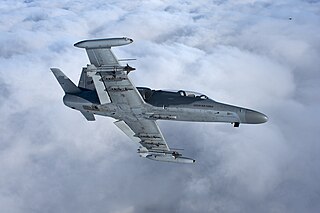
A subsonic aircraft is an aircraft with a maximum speed less than the speed of sound. The term technically describes an aircraft that flies below its critical Mach number, typically around Mach 0.8. All current civil aircraft, including airliners, helicopters, future passenger drones, personal air vehicles and airships, as well as many military types, are subsonic.
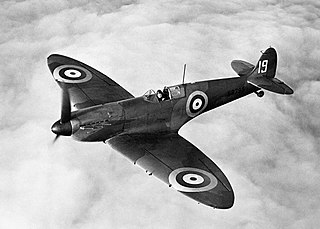
The British Supermarine Spitfire was one of the most popular fighter aircraft of the Second World War. The basic airframe proved to be extremely adaptable, capable of taking far more powerful engines and far greater loads than its original role as a short-range interceptor had allowed for. This would lead to 24 marks of Spitfire, and many sub-variants within the marks, being produced throughout the Second World War and beyond, in continuing efforts to fulfill Royal Air Force requirements and successfully combat ever-improving enemy aircraft.

This article briefly describes the components and systems found in jet engines.

Radiators are heat exchangers used for cooling internal combustion engines, mainly in automobiles but also in piston-engined aircraft, railway locomotives, motorcycles, stationary generating plants or any similar use of such an engine.
An airbreathing jet engine is a jet engine in which the exhaust gas which supplies jet propulsion is atmospheric air, which is taken in, compressed, heated, and expanded back to atmospheric pressure through a propelling nozzle. Compression may be provided by a gas turbine, as in the original turbojet and newer turbofan, or arise solely from the ram pressure of the vehicle's velocity, as with the ramjet and pulsejet.

Frederick William Meredith was an Irish engineer, communist and Soviet agent. From 1936 to 1939 Meredith along with Wilfrid Vernon, his colleague at the Royal Aircraft Establishment (RAE) were spying for Ernest David Weiss, a Soviet GRU agent. In 1945, Meredith began the development of a new generation all-electric three-axis autopilot system called SEP-1 or the military version MARK 9.














